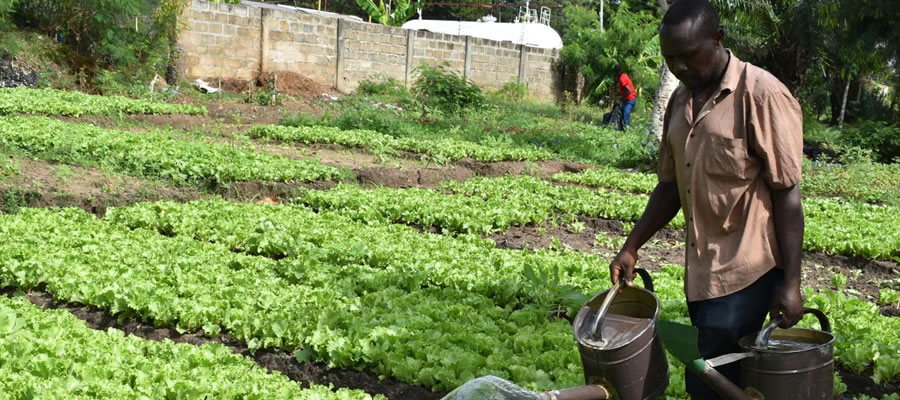

Education
Some of the indicators under the education sector have been outlined below:
Enrolment Levels
This section gives the present situation with regards to the total number of pupils/students in the various level of education in the District. The enrolment rate –generated from enrolment level- measures the number of persons who are supposed to be in school and are in school.
Capitation Grant
The Capitation Grant Scheme, which was piloted in 40 most deprived regions in 2004, became fully operational in 2005. The scheme continued to be implemented in 2006 to encourage participation and increase the school attendance rate. An amount of GH¢86,085was disbursed as Capitation Grant for pupils in public basic schools during 2012/2013 academic year.
School Feeding Programme
The objectives of the school feeding programme are to enhance school enrolment; encourage attendance; ensure retention; and improve the nutritional and health status of children and boost domestic food production.
Net Admission Rate (NAR) & BECE Pass Rate
The NAR measures the total numbers of pupils/students who are admitted at the various levels of education in relation to the population who are supposed to be in school.
Pupils /Teacher Ratio and Gender Parity Index
The Pupil Teacher Ratio is a key input indicator used as proxy for assessing the quality of education. The associated policy objective is to achieve a national Pupil Teacher Ratio of 35:1 at the primary level and 25:1 at the Junior High School level, as these levels are expected to be optimal for ensuring quality education.
The goal of ensuring parity in basic education has a targeted Gender Parity Index of 1 for all levels of basic education by year 2013. The Gender Parity Index measures the ratio between boys’ and girls’ enrolment rates, the balance of parity being 1.
Percentage of Trained Teachers
The quality of teaching and learning depends largely on the proportion of the trained teachers among the teaching staff. Increases in enrolment as a result of provision of the capitation grant to all basic schools, and the introduction of the school feeding programme in selected schools have undoubtedly intensified the demand for trained teachers.
Availability of Furniture
Any policy recommendation which is aspiring to increase enrolment level should as well incorporate the provision of furniture to commensurate with the intended total enrolment.
Complementary Basic Education (CBE)
CBE is educational intervention targeting out of school children in the District. That is those children who are supposed to be in school but are not.
Baseline survey for CBE project in Tain District shows that children between the ages of 6 and 14 are out of school due to challenges including:
a. Long distances between home and school (an average of 6km for Tain District and 10 km, especially for hard to
reach communities where some children need to cross rivers to school
b. Low appreciation of importance of education by parents and guardians
c. Parents using children as labour in their farming activities
d. Withdrawal of girls for marriage purposes
e. Economic hardship
The challenges are more pronounced in the following communities:
Kwame Brentim
SofoYawnsiakrom
Adjeikrom
Nyinimpiniagya
Attakrom
Currently there is no school in any of these communities and children have to walk long distance (more than the GES standard of 5km maximum) to attend school at Nsawkaw, the District capital. Apart from Attakrom that is about 3km away from Nsawkaw, all the other communities are more than 9km away and children also need to cross the Nyimpininiagya River to reach Nsawkaw.
Date Created : 11/20/2017 6:06:18 AM












 facebook
facebook
 twitter
twitter
 Youtube
Youtube
 +233 593 831 280
+233 593 831 280 0800 430 430
0800 430 430 GPS: GE-231-4383
GPS: GE-231-4383 info@ghanadistricts.com
info@ghanadistricts.com Box GP1044, Accra, Ghana
Box GP1044, Accra, Ghana